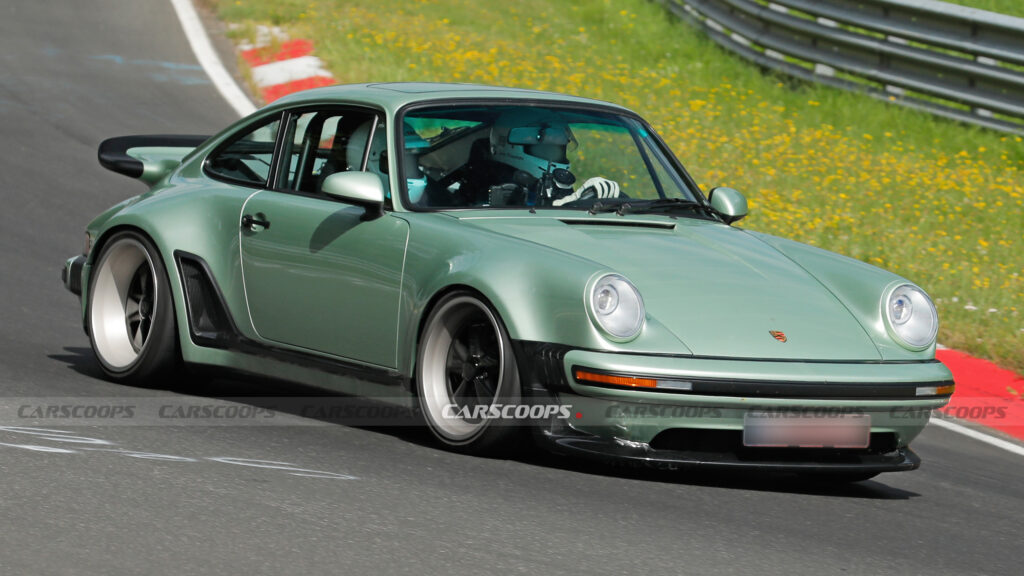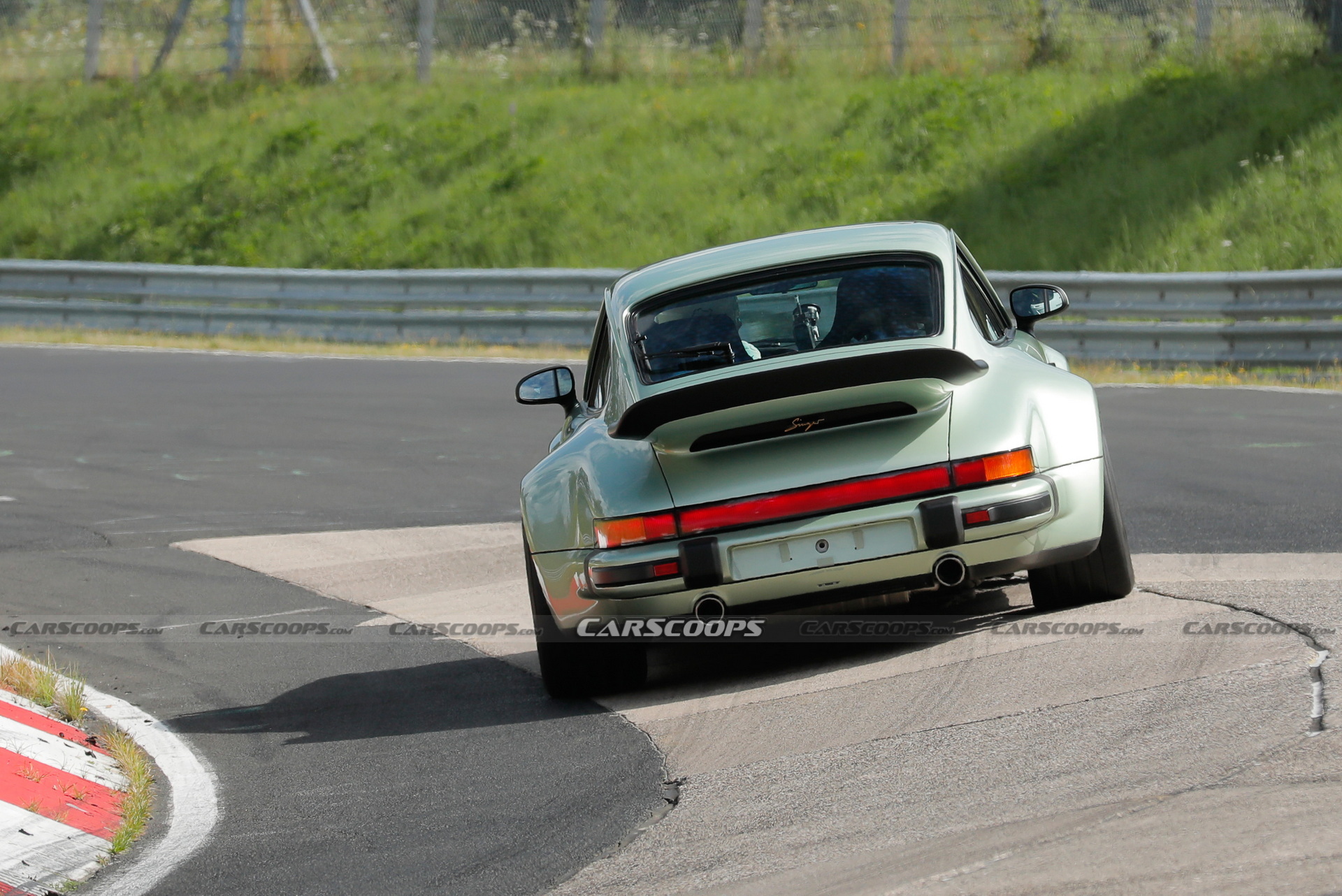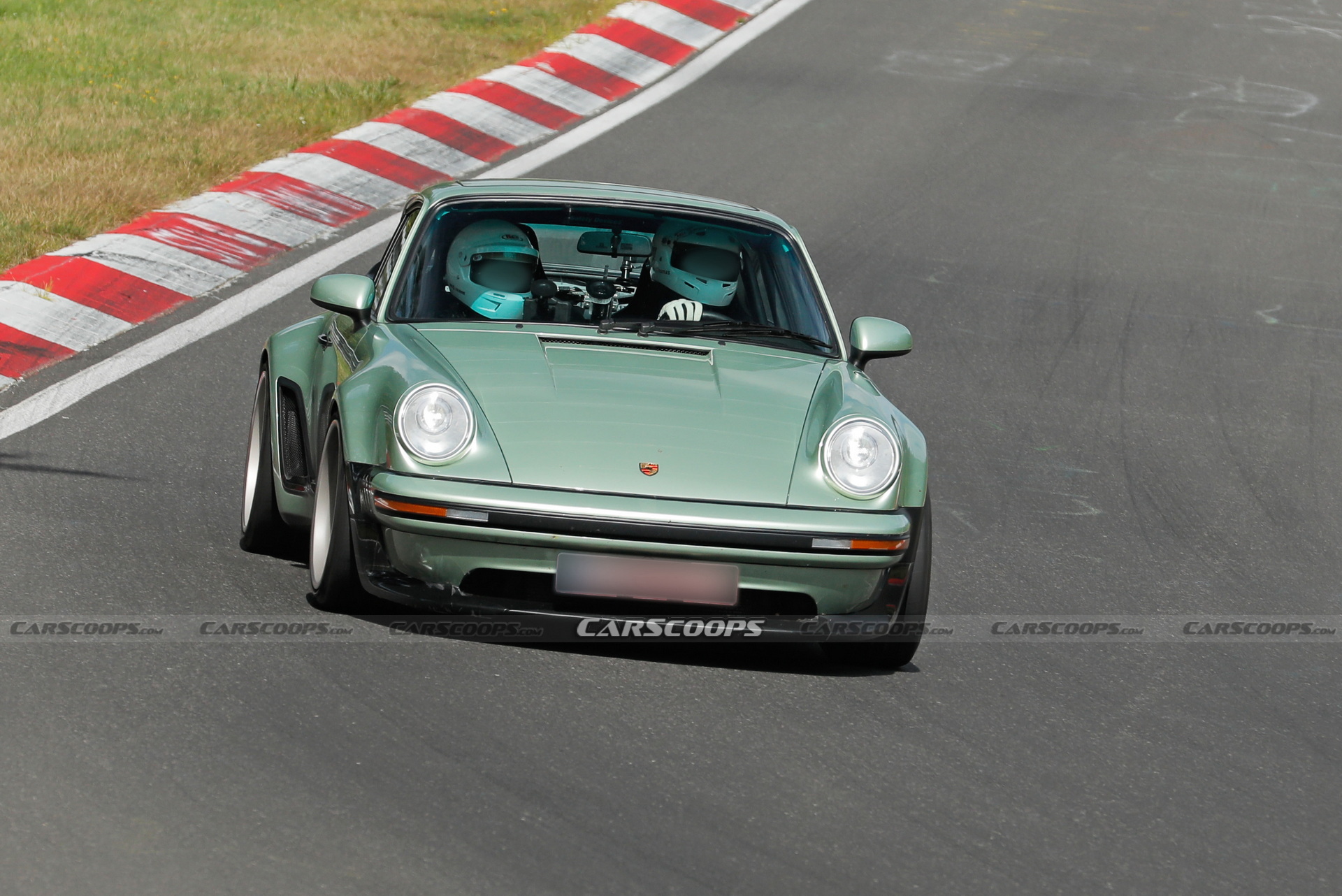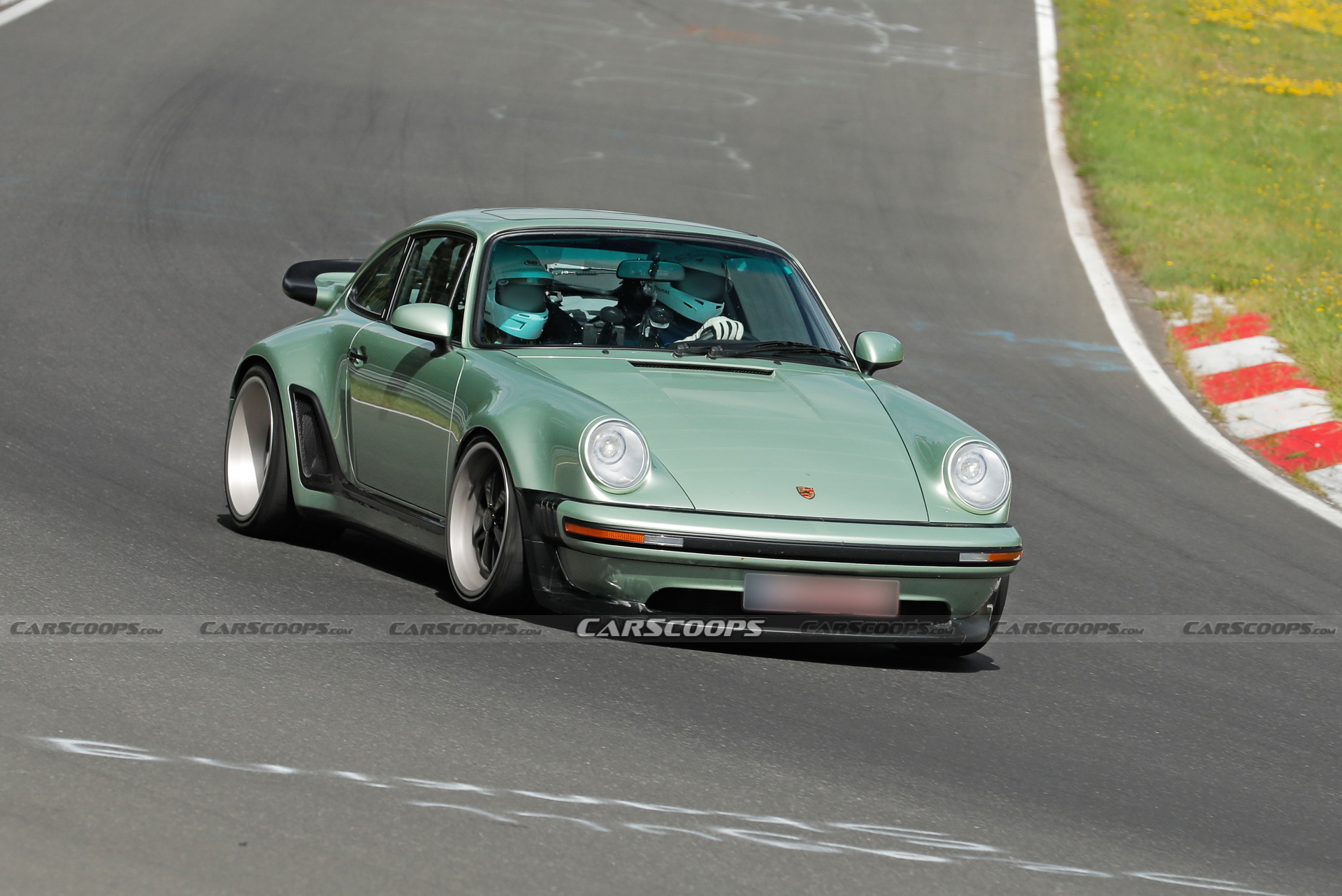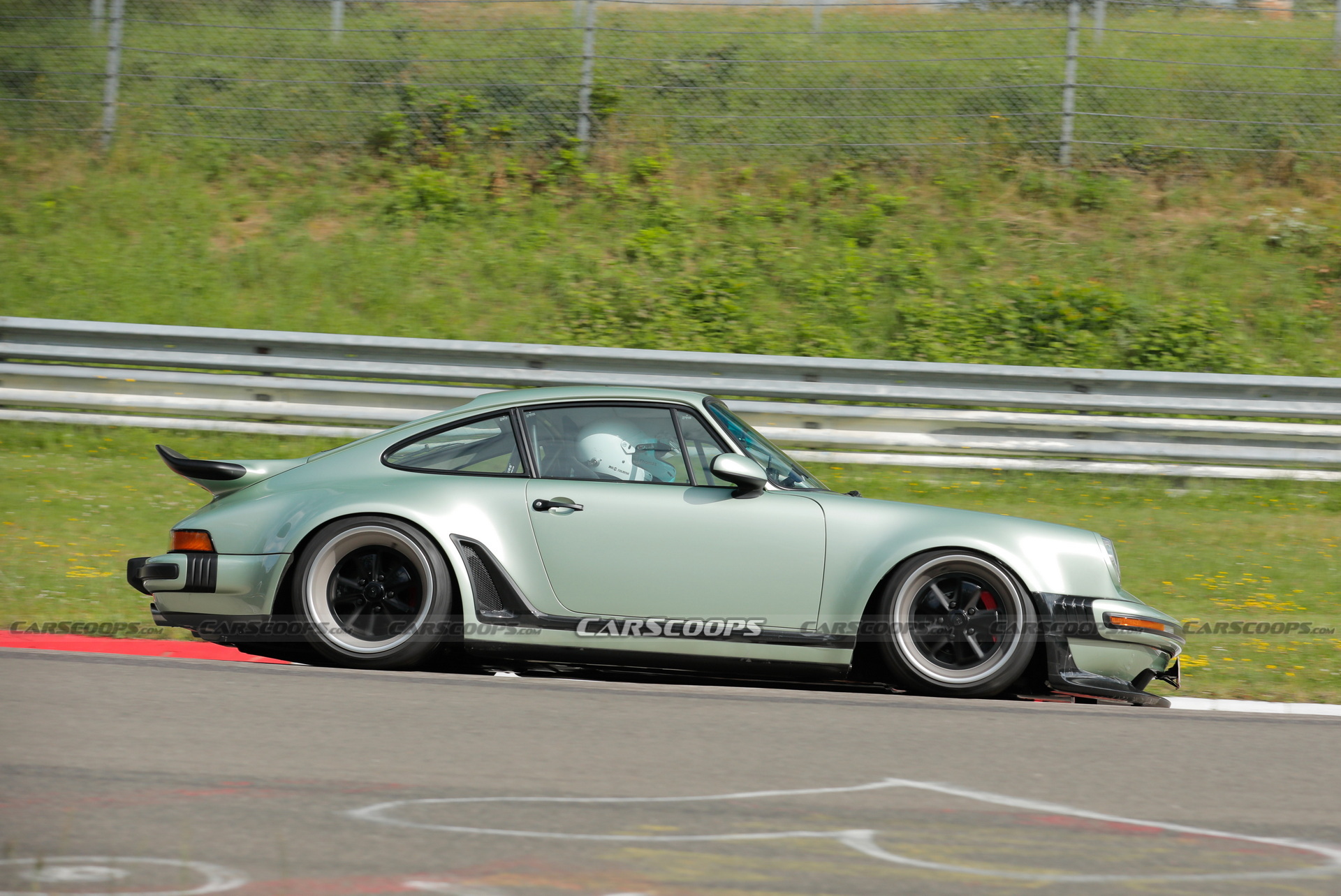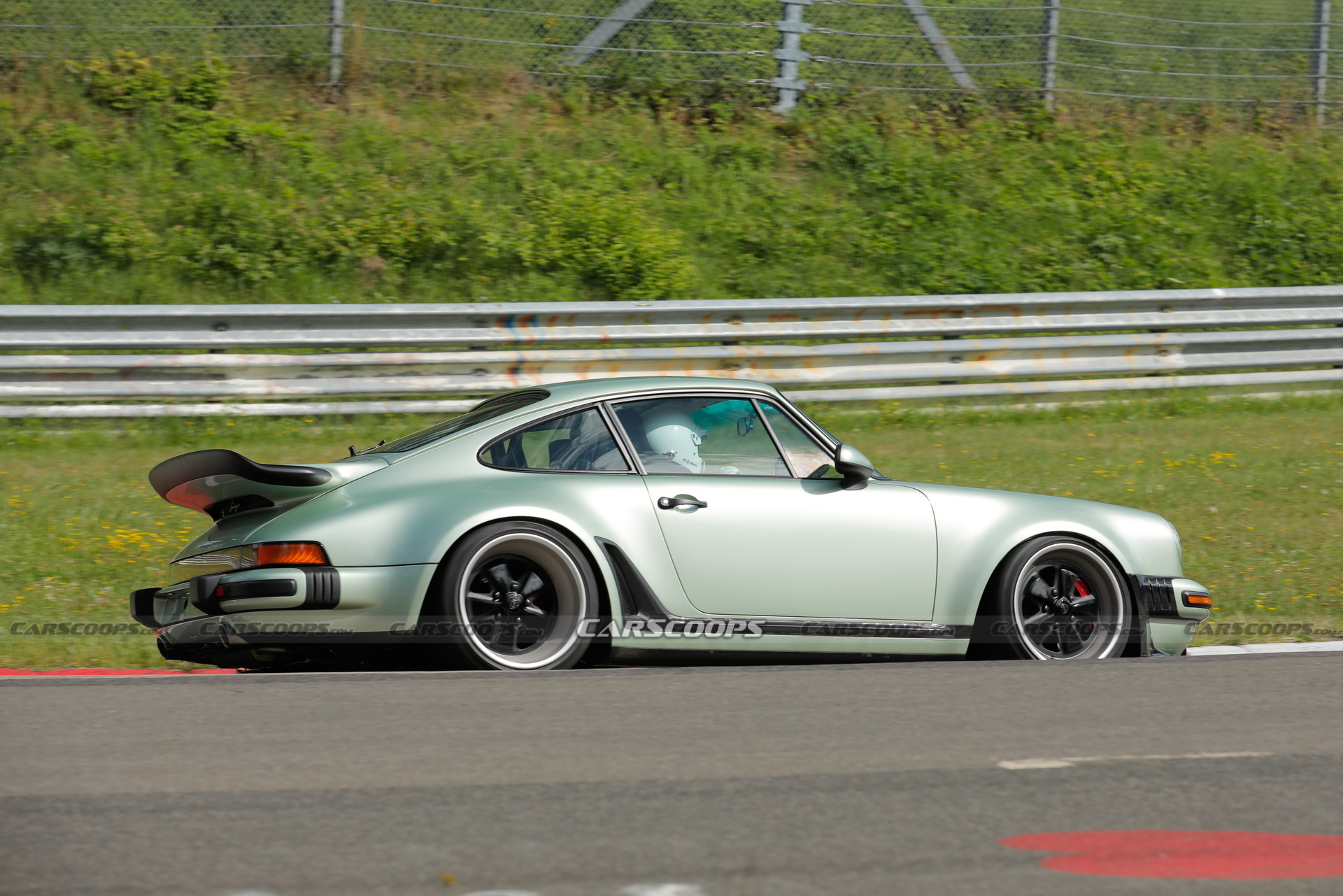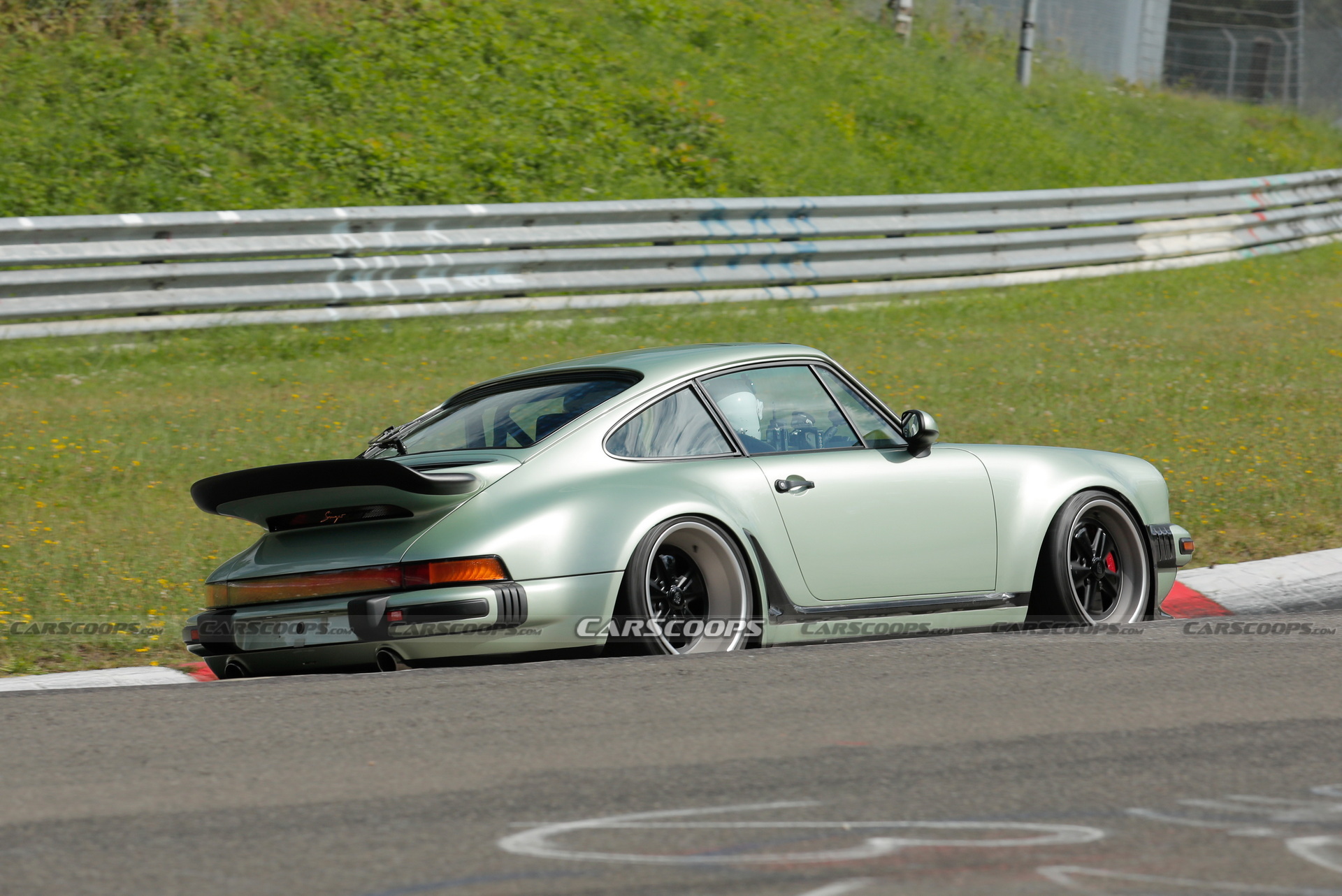- The car has a 3.8-liter air-cooled engine with the turbochargers of a 992-generation 911.
- All of the Singer’s body panels are made from carbon fiber.
- Customers will be offered rear- and all-wheel drive configurations.
It’s been two-and-a-half years since Singer first previewed its hotted-up Porsche 930 911 Turbo, and while the car’s gestation period has been longer than some expected, development of the car is well underway, and an undisguised prototype was recently snapped testing at the Nurburgring. Evidently, this will be a serious bit of kit.
It’s not often that we see a company as small as Singer testing a vehicle at the world’s most arduous racetrack. The ‘Ring is home to some of the world’s largest automakers and isn’t a place typically associated with restomodders. Nonetheless, the Californian firm wants to do everything it can to ensure its upgraded 930 can handle whatever future owners will throw at it.
Read: The Real Story Behind Porsche’s Latest Spat With Singer
This production-spec prototype is finished in a light shade of green and looks even cooler than the car shown in the renderings from early 2022. Somehow, Singer has managed to retain the original character of the 930 while still modernizing it. We’re particularly fond of the black air intakes on the rear quarter panels, as well as the Fuchs-style black and silver wheels. A pair of LED headlights are also featured and the beautiful ducktail spoiler is Singer’s own design.
Like its other creations, Singer’s 930 has lightweight body panels made from carbon fiber. It’s underpinned by the chassis of a 964 and rocks a powertrain that’s fitting for what is arguably Singer’s finest-ever creation.
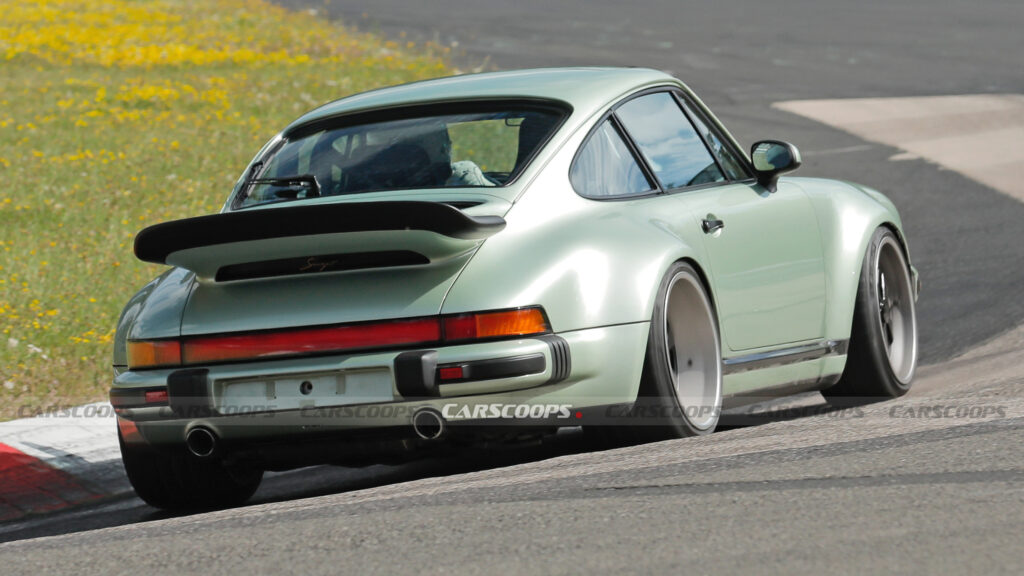
Driving the car is a 3.8-liter air-cooled Mezger flat-six supplemented by a pair of turbochargers lifted from the 992-generation 911. This mix of old and new results in over 450 hp, a significant increase from the 326 hp of the original 930 Turbo. We suspect some expert tuning of the engine’s software should also make it more responsive than the original.
All examples built will come exclusively with a six-speed manual transmission, although customers can choose between rear- or all-wheel drive. Production of the model will be capped at just 70 units.



